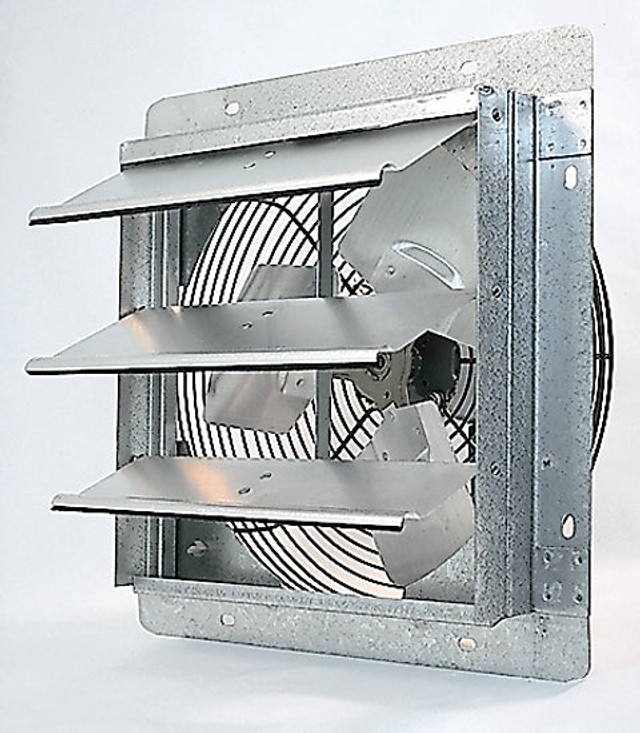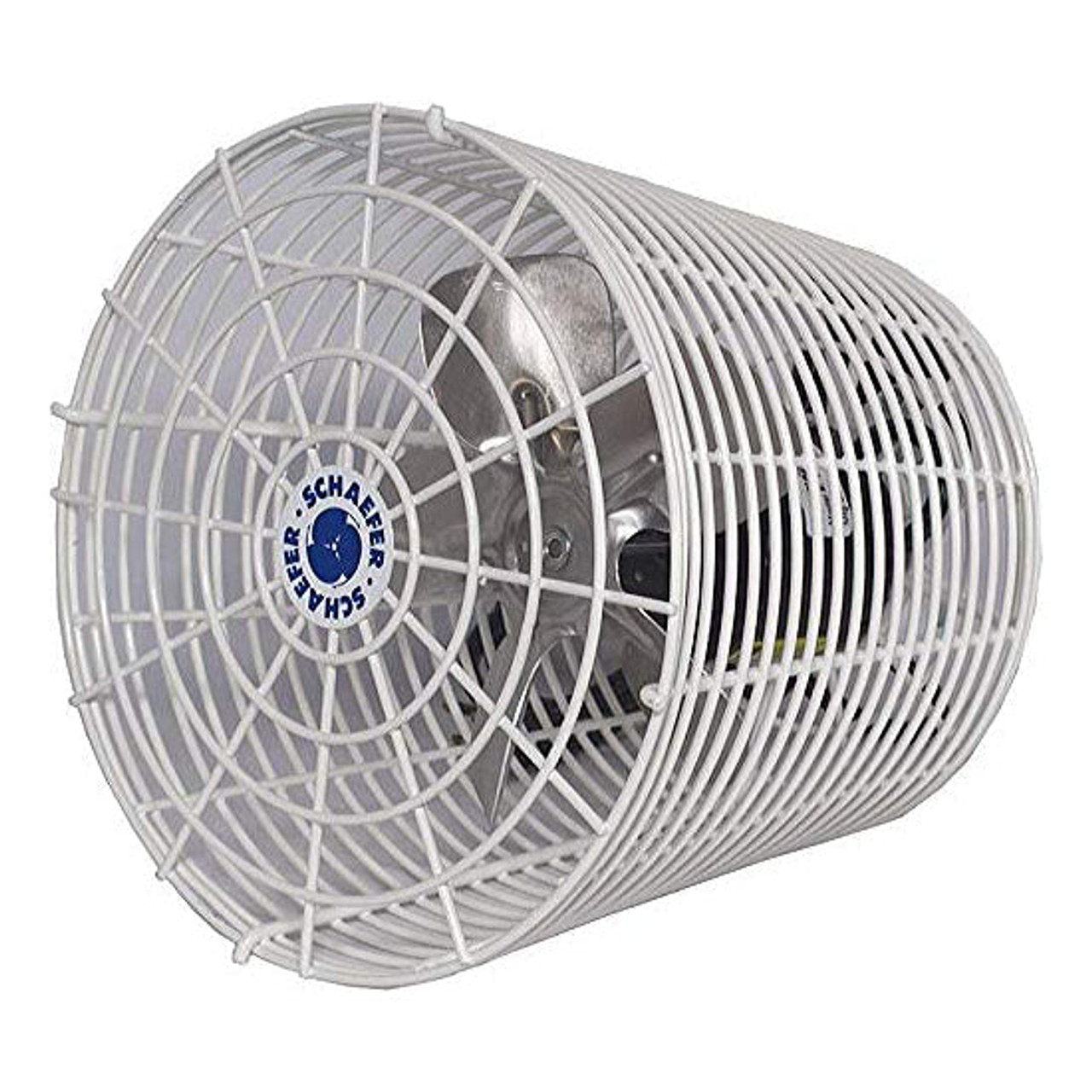6 Signs You Need to Buy an Exhaust Fan for Your Greenhouse
For gardening enthusiasts and professionals alike, a greenhouse is a prized possession that extends the growing season and protects delicate plants. However, the success of a greenhouse doesn’t solely rely on its ability to trap heat and light; proper ventilation is equally crucial. Without it, you could face problems ranging from stifling heat to rampant plant diseases.
Equipping your greenhouse with an exhaust fan when necessary cultivates an ideal growing environment. Whether you have a sprawling greenhouse or a modest plant haven, understanding and addressing your ventilation needs can make all the difference in your horticultural endeavors.
What Does an Exhaust Fan Do?
An exhaust fan in a greenhouse helps maintain an optimal growing environment. Its primary function is to regulate the internal climate by removing excess heat, humidity, and stale air while drawing in fresh, cooler air from outside. This process is essential for several reasons:
-
Temperature control. Greenhouses, by design, trap heat. While this benefits growing plants, it can sometimes lead to excessive temperatures, especially during warmer months. An exhaust fan helps lower the internal temperature to a range ideal for plant growth.
-
Humidity management. Plants continuously release moisture into the air through transpiration, leading to high humidity levels inside a greenhouse. Excessive humidity can encourage the growth of mold, mildew, and other plant diseases like fungal leaf rot. An exhaust fan helps reduce moisture levels by expelling humid air and bringing in drier air.
-
Air circulation. Good air circulation is vital for plant health. It ensures an even distribution of carbon dioxide, which plants need for photosynthesis, and prevents the formation of stagnant air pockets that can harbor pests and diseases—an exhaust fan aids in circulating air within the greenhouse, promoting healthier plant growth.
-
Pest and disease reduction. A well-ventilated environment is less attractive to many pests and reduces the risk of plant diseases. By continuously refreshing the air, an exhaust fan helps keep these issues at bay.
Six Signs You Need an Exhaust Fan in Your Greenhouse
Recognizing when your greenhouse requires an exhaust fan is vital for maintaining a healthy and productive plant environment. Here are some key signs that indicate the need for improved ventilation using an exhaust fan:
-
1. High humidity levels. Consistently foggy windows or a damp interior are telltale signs of excessive humidity. High humidity can lead to mold and mildew, harming plant health. An exhaust fan helps in balancing moisture levels inside the greenhouse.
-
2. Overheating. If the internal temperature of your greenhouse frequently soars, especially during the warmer months, it can stress or even kill your plants. An exhaust fan regulates the temperature, ensuring a comfortable climate for plant growth.
-
3. Stagnant air. Plants need fresh air for proper growth. If you notice that the air inside your greenhouse feels stale or notice poor plant growth, it’s a sign of inadequate air circulation. An exhaust fan can enhance air movement, ensuring plants get the fresh air they need.
-
4. Pest infestations and disease outbreaks. High humidity and stagnant air are breeding grounds for pests and diseases. If you’re battling frequent infestations or disease issues, improving ventilation with an exhaust fan can create a less hospitable environment for these problems.
-
5. Condensation buildup. Excessive condensation on the walls and ceiling of your greenhouse can lead to water damage and plant diseases. An exhaust fan can reduce condensation by removing moist air from the interior.
-
6. Difficulty in controlling climate. If you find it challenging to maintain a consistent temperature or humidity level in your greenhouse, it could be due to inadequate ventilation. An exhaust fan provides more control over the internal climate.
Choosing the Right Exhaust Fan for Your Greenhouse

Selecting the appropriate exhaust fan is vital for ensuring adequate ventilation for your greenhouse. Consider the size of your greenhouse, the types of plants you’re growing, and specific ventilation needs. Once you’ve chosen the right fan, ensure it is positioned to facilitate optimal airflow and regularly cleaned to maintain efficiency.
Here’s a look at various exhaust fan options:
-
Greenhouse Shutter Exhaust Fan. Ideal for larger greenhouses, these fans are powerful and efficient. They are typically mounted on the wall and include automatic shutters that open when the fan operates and close when it’s off. This design prevents backdrafts and helps maintain a consistent temperature and humidity level.
The Greenhouse Shutter Exhaust Fan is perfect for gardeners who need powerful and effective air circulation. It is available in corded and cordless options and features a humidity-protected, enclosed motor and a galvanized shutter with felt-edged aluminum vanes. Depending on blade size, it offers a range of CFM ratings from 460 to 4163, ensuring efficient air circulation in greenhouses.
-
Clip-On Fan. For small to medium-sized greenhouses, clip-on fans are a versatile and economical choice. They can be easily attached to shelves, poles, or frames and are great for directing airflow to specific areas. These fans are handy for targeting hot spots or areas with poor air circulation, making them a flexible option for personalized ventilation.
The Clip-On Fan C3068 offers portable air circulation for your greenhouse, featuring a 6" blade that circulates air at 90 CFM on low and 190 CFM on high. It has a 2-speed motor, quiet operation, a tiltable head, and a 6 ft. power cord, efficiently moving air over 20 ft. while using only 37 watts.
-
Wall Mount Oscillating Fan, 12". This type of fan is a good fit for medium-sized greenhouses. It can be securely mounted on the wall, and the oscillating feature ensures that air is evenly distributed across a wider area.
The Wall Mount Oscillating Fan, 12", offers efficient air circulation with a 3-speed, 90° oscillating head. It features a 12" ABS blade and plated steel guard, delivering 930, 780, and 620 CFM at different speeds. Consuming a maximum of 39 watts, it’s designed for easy installation on your greenhouse walls, saving bench space for your plants.
-
Table-Top Finger-Safe Fan. Designed for small spaces or for targeting specific areas like seedling tables, these fans are compact and safe, thanks to their finger-safe grill. They provide a gentle yet effective airflow, ideal for delicate plants or young seedlings that might be harmed by more powerful air currents.
The Table-Top Finger-Safe Fan is designed for versatile placement. It features a unique scoop-shaped soft blade and a 2-speed motor, effectively moving air up to 30 ft and delivering approximately 200 CFMs on low and 400 CFMs on high. It operates quietly, has a pivoting chrome stand for directional airflow, and includes a 6 ft. power cord.
-
Schaefer Long-Life Circulation Fan. Built to last, the Schaefer Long-Life Circulation Fan is an excellent investment for those seeking a durable, long-term ventilation solution. It’s suitable for any greenhouse size and is designed to withstand the humid and wet conditions often found in greenhouses. This fan ensures consistent airflow, promoting healthy plant growth and reducing the risk of disease.
The Schaefer Long-Life Circulation Fan offers non-stop air circulation in 8" and 12" models. The 8" model, with a 4½ ft. grounded power cord, delivers 450 CFM, while the 12" variant, suitable for hardwiring or attaching a cord, provides 1470 CFM. Both feature a quiet, maintenance-free motor enclosed in an epoxy-coated steel guard and include an L-shaped ceiling mounting bracket.
Exhaust Fan Maintenance
Regularly cleaning and maintaining your greenhouse exhaust fan ensures optimal performance and prolongs the life of your unit. Here are some helpful suggestions for maintaining your exhaust fans:
-
Regular cleaning. Use a static duster or damp cloth to remove dust and debris from fan blades and housing. Clean the shutters and louvers to ensure they open and close smoothly.
-
Lubrication. Lubricate the motor and moving parts annually if they are not self-lubricating. Use a lubricant specified by the manufacturer, such as lightweight machine oil, silicone-based formulas, or WD-40.
-
Check for damage. Inspect blades for any signs of wear or damage. Replace bent or damaged blades to maintain efficiency.
-
Motor maintenance. Check the motor for overheating signs like a burning smell, slower operation, or automatic shut-off. Ensure the motor's ventilation is not obstructed.
-
Belt inspection (if applicable). Check belt tension and alignment. Replace worn or frayed belts.
-
Electrical connections. Ensure all electrical connections are tight and secure. Regularly inspect the power cord for any damage.
-
Test thermostats and controllers. Regularly test any thermostats or automated systems. You can verify the system’s temperature control by comparing the thermostat readings to an independent thermometer. Adjust settings as needed for optimal performance.
-
Shutter and louver function. Ensure shutters and louvers operate freely. Adjust or repair any mechanisms that are sticking or not closing properly.
-
Rust prevention. Check for rust or corrosion, especially in high-humidity environments. Apply rust-preventive measures like spray-on corrosion-resistant coatings.

Ensuring Plant Growth and Health in Your Greenhouse
Proper ventilation, facilitated by the right exhaust fan, can impact plant growth and health. You’ll notice healthier plants, fewer diseases, and a higher yield. Keep in mind that investing in the right exhaust fan is more than just an enhancement to your greenhouse; it’s a commitment to the health and prosperity of your gardening journey.
While exhaust fans are a key component of greenhouse ventilation, they can be complemented with other strategies like manually opening windows or using shade cloths to control temperature and light. With the proper setup, you can enjoy a vibrant and productive greenhouse environment, season after season.


